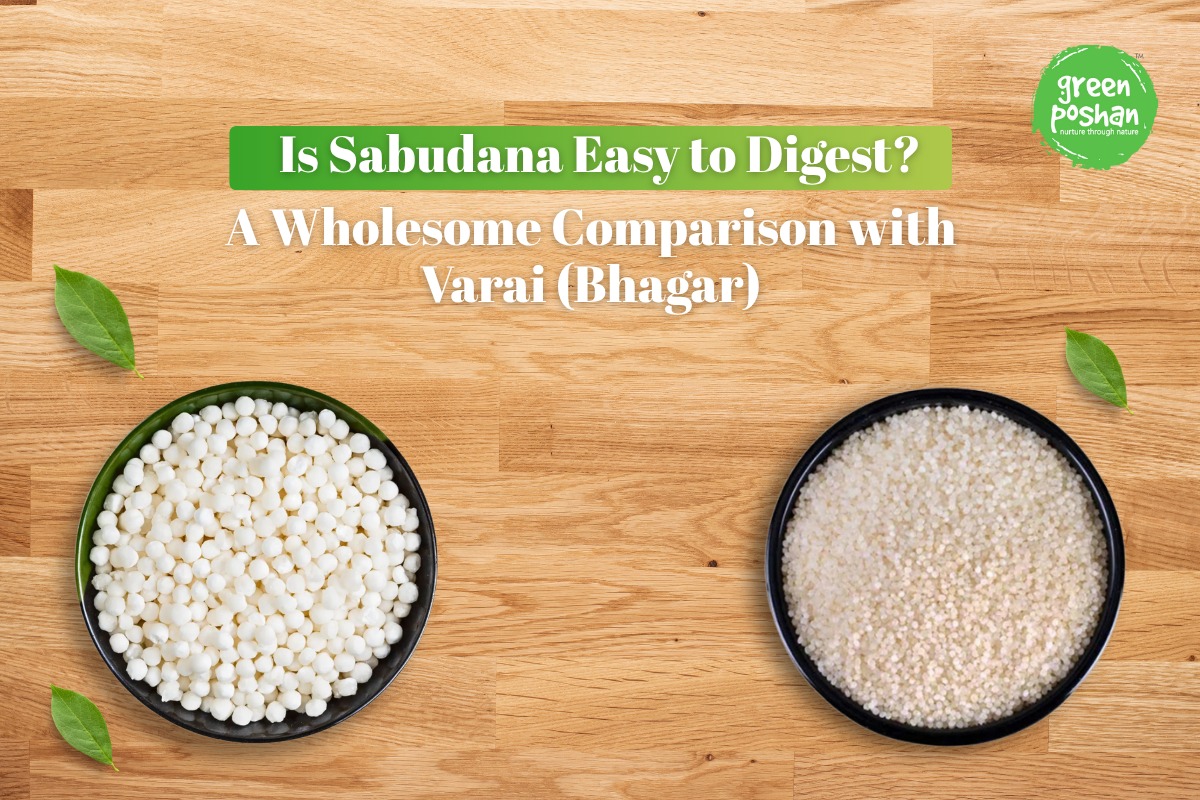Sabudana (tapioca pearls) and Varai (Bhagar or Sama rice) are two popular staples consumed during fasting in India. While both are gluten-free and versatile, many health-conscious individuals are starting to question: Is sabudana easy to digest? And how does it compare to a traditional grain like Varai?
In this blog, we’ll decode their nutritional value, digestibility, and how Varai is becoming the better choice for smart eaters.
What Is Sabudana?
Sabudana is made from the starch extracted from the roots of the cassava plant. It’s a high-carb food often used in dishes like khichdi, vada, and kheer during fasting. However, it offers very little protein, fiber, or essential nutrients.
Nutritional Overview (per 100g cooked sabudana):
- Carbohydrates: ~88g
- Protein: ~0.2g
- Fiber: ~0.9g
- Fat: ~0.2g
Is Sabudana Easy to Digest?
While sabudana is soft and light on the stomach for many, it is essentially pure starch. This means it digests quickly, causing a rapid rise in blood sugar levels, especially when eaten in large quantities.
Those with diabetes or digestive sensitivities may experience discomfort, bloating, or sugar spikes. So while it may feel easy to digest in the short term, its long-term nutritional value is minimal.
Introducing Varai (Bhagar) – A Nutrient-Rich Fasting Superfood
Varai, also known as sama rice or barnyard millet, is a traditional fasting grain in Indian households. Unlike sabudana, it contains protein, dietary fiber, and essential micronutrients like iron, magnesium, and B vitamins.
Nutritional Overview (per 100g cooked Varai):
- Carbohydrates: ~65g
- Protein: ~6.2g
- Fiber: ~2.4g
- Fat: ~2g
Why Varai Is the Smarter Choice
- Rich in nutrients: Unlike sabudana, Varai supports energy levels and keeps you fuller for longer.
- Better for weight-watchers: High fiber content aids in satiety and avoids overeating.
- Sustained energy: No sugar crashes like those caused by sabudana.
- Traditionally trusted: Used for centuries in Indian fasting rituals, it respects your health and culture.
Little Millet (Varai) — 250g
Little Millets, also known as Varai Millets in many parts of India, are among the smallest yet most nutrient-dense grains found in traditional Indian food culture. These tiny grains pack a remarkable punch when it comes to health benefits, making them a wise addition to modern, health-focused diets. Green Poshan brings to you naturally sourced, minimally processed Little Millets (Varai) to support everyday wellness through traditional nutrition.
Naturally gluten-free and easy to digest, Varai Millets are often used during religious fasting and are celebrated for their lightness and nutritional profile. They cook quickly, taste mildly nutty, and are perfect for porridge, upma, pulao, and even dosa batters. Whether you’re looking to manage weight, support digestion, or include ancient grains in your routine, Little Millets are a reliable and wholesome option.
Final Verdict: Sabudana vs. Varai
So, is sabudana easy to digest? Technically, yes — but at the cost of almost zero nutrition and high glycemic impact. On the other hand, Varai is easier on your system in the long run, especially when you’re fasting or looking to maintain balanced energy levels.
Switch to Varai with Green Poshan
At Green Poshan, we offer naturally grown, unpolished Varai (Bhagar) cultivated through traditional farming. No chemicals, no shortcuts — just real nutrition delivered to your door.
Explore our fasting-friendly range and make smarter, healthier choices.
Shop Varai Now


